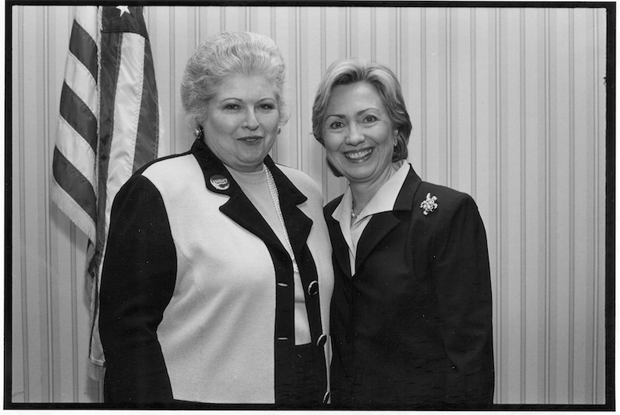Among those watching the recent debate over healthcare reform was Sarah Weddington, who was on the front lines of the fight for reproductive rights in 1973 when she defended Norma McCorvey, the woman seeking an abortion in the landmark Roe v. Wade Supreme Court case. We spoke to Weddington about the history of abortion in America, the Stupak amendment, and how if you had told her 37 years ago that she would still be talking about abortion rights today, she “never would have believed that.”
Question: How have American opinions changed since Roe v. Wade?
Answer: “Well, if you look at the majority of American citizens in 1973, when Roe v. Wade was decided, many thought it was not the government’s business to prohibit abortion…(T)here were so many horror stories of women who had traveled…for illegal abortions, who had done self abortions, (and) the number of women who died as a result of those efforts. Most major hospitals (including those) here in Texas… had … “IOB wards,” (meaning) infected obstetrics ward, and there were places where the medical schools … were trying to save women who had gone through those situations. So, there was much more (awareness) … in the American public’s mind of the tragedies for women that happened when abortion was illegal. Today, the polls would indicate that the majority of people are still in favor of Roe vs Wade, that the government should not decide what options women choose.
However, if you start, then, going down a list of restrictions on abortion (and) restrictions on access, it gets … difficult and there it is sometimes closer. The polls I’ve seen lately still say most people don’t think it should be the government’s business to make decisions, but the polls are closer on access and restriction than they are on the basic (issue of) who should make the decision.”
Q: What was abortion like for women before Roe V. Wade?
A: “California abortion had become legal before Roe v. Wade was decided … it was Ronald Reagan, the then-governor of California, who signed that bill into law. It was not until he ran for president that he became so opposed to abortion. (In Texas), there actually … (were) about 10 seats on American airlines out of Dallas every Thursday, going to California for women to have access to legal abortion out there and then come back on Sunday.”
Q: Do you think we are in danger of women being apathetic about their rights?
A: “I can’t help but feel — and sometimes I do think I’m such an optimist — but I do not think young women will ever give up the right to make their own decisions. I think the problem we have right now is getting them to focus on the number of people who oppose abortion and oppose women making their own decisions … the one good thing about the Stupak amendment is it kind of grabs young women and says, ‘Look, the right to make your own decisions and to have access to procedures is really in danger, and you better get active.’
Q: Why do you think teen pregnancy rates went up this year for the first time in a decade?
A. “George Bush, as president, and the people around him put so much money and effort into abstinence education, which was to ‘just say don’t.’ Well, that’s not realistic for a lot of younger people, and the result is the number of unplanned pregnancies and those are sometimes (happening to) teenagers…If all you do is say ‘no’ to young people, that is not going to work. It has not worked when their parents were their age. It doesn’t work now.“


